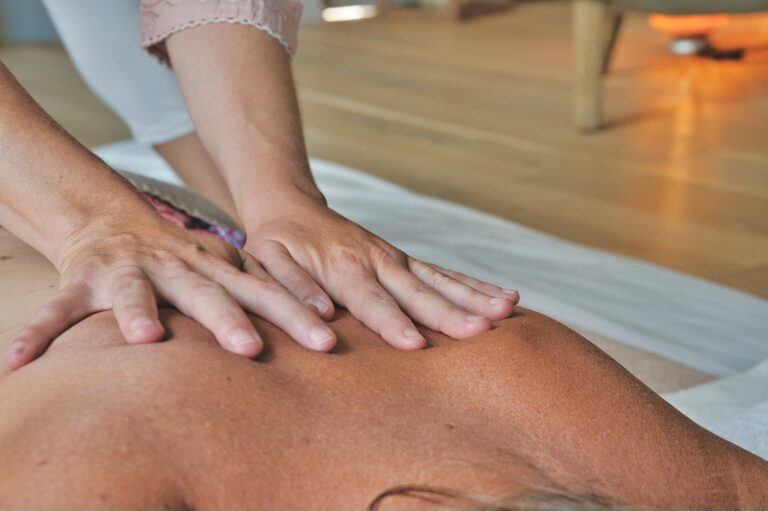We often get fed a lot of ideas about our bodies that make us believe in an inevitable downward spiral (phrases like “it’s normal wear and tear” and “you’re just getting older” might ring a bell…), but the truth is that we have a brilliant design that is meant to lift us up and keep us moving gracefully and feeling pain-free well into later life. The reason why so few of us experience that however is because we live in a culture where the way we use our bodies is very out of sync with what is ideal for us. This usually leads to a domino effect of pain and strain patterns, and one can feel like they are chasing symptoms around through the years as their posture slumps and their potential for free and easy movement declines.
Structural Integration (SI) takes a look at the lines of fascial support in the body and works to de-adhere the places that have gotten sticky and dehydrated, bringing glide, ease, and hydration back to the tissues. As the tissue regains health and balance, alignment and posture naturally improve, pain significantly decreases or disappears, and movement becomes more supported, balanced, and fluid.
How Structural Integration Works
SI is a type of bodywork that seeks to open, balance, and align one’s body; thereby integrating the structure of the human body which can get off-balance through a lifetime of compensatory patterns.
SI achieves this re-integration primarily through working with the fascia, or connective tissue of the body. Working in the fascia is very slow, patient work which many describe as the thing that finally touches the areas that haven’t been reached before.
Traditionally this fascial work happens through a series of 10* strategic sessions which are designed to help you find your back to your innate support. I have often described SI as “the chess of bodywork” because you can’t change one “piece” on the “board” without changing the whole game. In SI we are always looking at relationships between things in the body, and are working to see how anyone change affects the whole; always seeking harmony between all the intricate connections within our body.
What does Structural Integration help with?
SI is a good choice for those who are dealing with chronic pain or nagging discomforts, injuries that beget other injuries and heal slowly or not at all, and people dealing with repetitive overuse and postural strain which- whether you are an elite athlete or a desk jockey- can stem from a wide variety of sources.
Conditions that respond successfully to Structural Integration include
- Back and neck pain
- TMJD
- Tension headaches
- Shoulder problems including rotator cuff injuries
- Sacroiliac dysfunction
- Knee problems
- Plantar fasciitis
- Hip pain
- Postpartum recovery after childbirth and C-sections
*Though Structural Integration traditionally happens in a 10-series, you are not required to do 10 sessions. People usually try between 1 and 3 sessions to see how they respond and then go from there.




